To prevent the structure from leaking! Presses for pressure testing the heating system and other devices
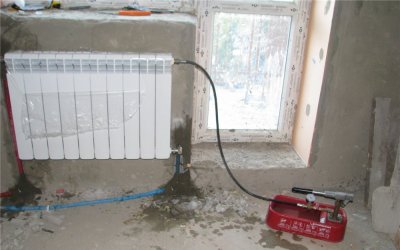
Pressure testing of the heating system - checking its strength for the absence of leaks in it in test mode by increasing the pressure level.
It is better not to perform pressure testing yourself, but to entrust this task to professionals who will use special equipment.
Equipment required for pressure testing of heating systems
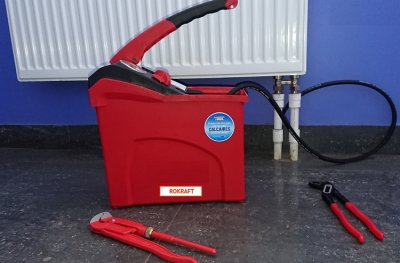
To carry out this process, the following components are required:
- pressure gauge;
- pneumatic compressor manual or electric;
- shut-off valves;
- hydraulic type compressor manual or electric (depending on the volume of work being performed);
- valves bleed or emergency type.
Important! For tapping welded seams of pipelines, it is permissible to use a hammer weighing no more than 1.5 kg.
Purpose of the press and its types
Such a device required to simulate hydraulic shock in the heating system. In other words, the pump artificially increases the pressure above the operating level. There are two main types of such a unit.
Hand press
This pump is used for short heating system lengths.. It is driven by human muscle power. The standard set of such a unit is a hose, a tank and a pressure gauge. It is distinguished by its low price and the absence of difficulties with operation. For certain jobs, there are weight restrictions for such pumps.

Photo 1. Manual pump for pressure testing of heating systems from the manufacturer Instan. Water is poured into the product.
Electric pump
The main difference between this device and the previous one, in addition to the high price and bulky dimensions, is that the pressure is set by the operator, and it is increased by the built-in automatic mode.
Pumps of this type are capable of creating and maintaining pressure levels. from 60 to 500 atm. This makes it possible to use them for any heating systems. As a rule, they are used by professionals working with large objects. In addition to testing, specialists use electric pumps for servicing large technological systems.
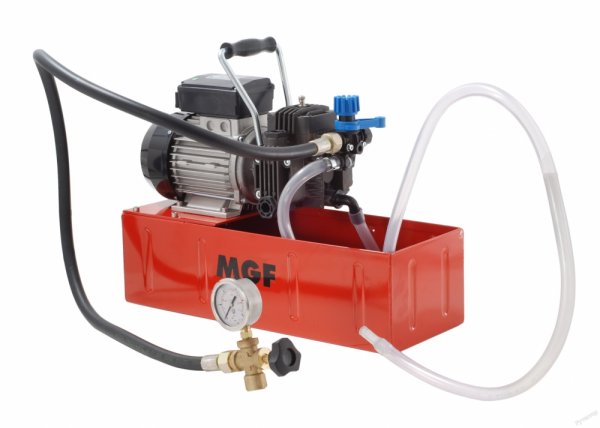
Photo 2. Electric pump MGF for pressure testing of heating systems. The body of the product is similar to the manual model.
Types of compressors
Depending on the form of their exploitation There are two main types.
Hydraulic
It consists of the following elements:
- frame;
- liquid reservoir;
- pressure gauge to determine the pressure indicator;
- hose, providing connection to the pipeline that has been tested;
- pen, which allows for the creation of a forced air mass.
If a compressor of this type is manual, it is formed from steel or high-strength alloys and can weigh from 5 to 7 kg. The choice of necessary equipment depends on the purpose of operation.
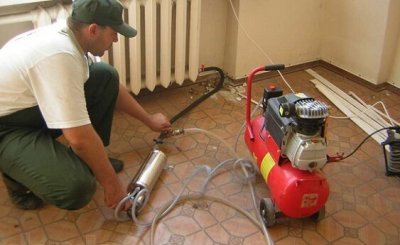
This unit has the following varieties:
- membrane;
- one and two stage;
- vane-rotor.
The operating principle of such a hand-held device: Initially, liquid is supplied to the closed section of the system. As it reaches the maximum contour, careful monitoring of the pressure level begins.
During the entire process of pressure testing, the hand pump operates. After a period of time, the pressure indicator is determined again. Comparison of the final and initial results will determine the integrity level of the system as a whole.
This is due to the fact that such a unit is capable of operating not only with water or antifreeze, but also with oil.
Hydraulic compressor with electric drive of self-priming type capable of taking and lifting liquid from any reservoirs or wells.
Pneumatic
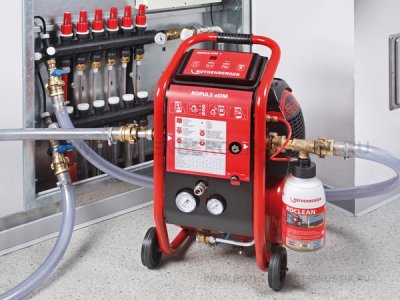
Unlike others, this type of device used for testing systems heating by forcing air.
The pneumatic compressor kit must include: connection fittings and a bleed valve.
It is highly not recommended to carry out this process on your own. It's better to contact specialists.
The smallest in productivity, but suitable for carrying out such a procedure in a private house with one floor is foot operated car compressor.
Attention! If non-standard pneumatic equipment is used, it is essential to have a shut-off valve “nipple” in the section from the pressure gauge to the pump.
Otherwise, air the masses will move in the opposite direction.
Purpose of the pressure gauge
The pressure gauge is an important component of the pressure testing process.
Depending on the extent of the procedure being carried out, a pressure gauge with the required measurement range is selected.
The presence of this device is necessary to carry out visual control over the test change in pressure level. As it gradually increases above the standard operating indicator in the system, the pressure gauge needle should not deviate in the opposite direction. If this situation occurs, it indicates a leak in the heating system and its depressurization.
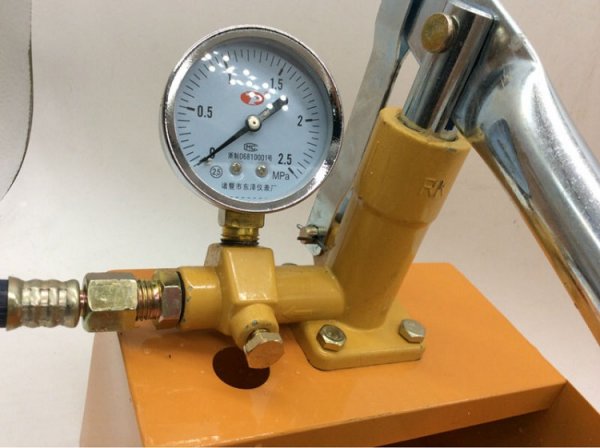
Photo 3. Manometer for measuring pressure during pressure testing of heating systems. The device is installed on a hand pump.
Requirements for shut-off valves
This element must necessarily participate in the pressure testing process. Shut-off valves are designed to close the flow of the medium. In addition, shut-off valves are used for its protection and distribution.
Depending on the type of liquid or gas used, the equipment for this process There are many requirements for shut-off valves:
- service life 50 years and older;
- the device must not lose its tightness level even after the expiration of 2500 cycles;
- ensuring high-quality operation of shut-off valves at temperatures from -10 to +79 degrees in the underground position and from - 40 to + 60 degrees - on the ground;
- the device is started at the level of maximum force in 250 N/m;
- mandatory indication of boundaries and movement line by means of graphic application;
- ensuring a tight seal all drives and pipes;
- proportionality of the attached element pipe parameters, threads;
- efficiency of shut-off valves, which is achieved due to its ability to reduce the hydraulic resistance of the crimping elements to a minimum;
- structural reliability — the operation of the fittings should not be disrupted even at a pressure increased by one and a half times relative to the extreme value at 2.5 MPa;
- Necessarily presence of clear markings indicating the manufacturer and technical parameters of the device.
Useful video
Watch the video, which demonstrates the process of pressure testing a heating system.
Requirements for pressure testing equipment
The elements of this process must be of high strength and reliability class.to prevent the occurrence of an emergency situation.
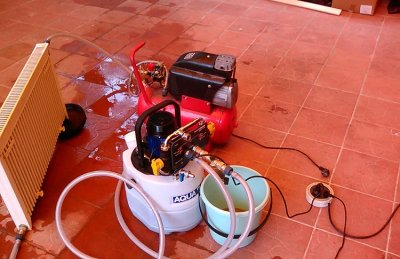
Each device must come with instructions for its proper use.
Pressure gauges used for pressure testing of heating systems are tested and approved for use (sealed) by special state laboratories before their direct use.
For clear visual control over the testing process It is necessary to ensure unimpeded access to each of the devices.






